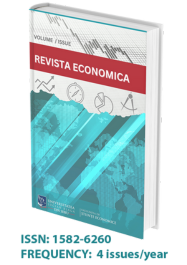
SELECTING INDICATORS OF PREDICTING FRAUD RISK. CASE STUDY FOR ROMANIAN BUSINESS ENVIRONMENT
SAFTA (PLEȘA) Ioana Lavinia, Babes Bolyai University
SABĂU (POPA) Andrada Ioana, Babes Bolyai University
BORLEA Sorin Nicolae, Babes Bolyai University, West University of Arad and University of Oradea
CIUBOTARU Anastasia, Babes Bolyai University
Abstract:
The act of fraud has been practiced since ancient times and manifests itself in different ways. The aim of the study is to apply the Beneish score on Romanian firms and to identify which indicators are sensitive to the state of fraud. The sample was selected from the Bucharest Stock Exchange and consists of 66 companies traded on the main market for the years 2016-2021. The collected data were analyzed year-by-year and cross-sectional methods (panel data) using manually collected information extracted from financial statements downloaded from the Bucharest Stock Exchange. Based on this data, the Beneish score was calculated and then statistical tests were performed. Using the obtained results from the Beneish Score calculation, we were able to divide the companies into two groups. The obtained scores, clearly underlines the two states: fraud and non-fraud. The ones in the fraud state have a decreased score, while the companies with no likelihood of fraud risk have lower scores. To further investigate our results, we identified sensitive items in both states such as DSRI (Days Sales Receivable Index) and GMI (Gross Margin Index). In conclusion, several theories or hypotheses are offered to explain the underlying motivations for fraud appearance. Romanian companies listed on regulated markets can be classified into risk groups in terms of fraudulent financial statements by applying the Beneish score. The results of the present study are in the interests of the policy makers, management team, business analysist and as well for the general use.
Keywords: fraud, Beneish, fraud triangle theory, Romanian company
JEL Classification: G17, G40
Volume: 74, Issue: 4
Pages: 75 - 90
Publication date: December, 2022
DOI: 10.56043/reveco-2022-0039
Download the article: http://economice.ulbsibiu.ro/revista.economica/archive/74408safta&sabau&borlea&ciubotaru.pdf
SAFTA (PLEȘA) Ioana Lavinia, SABĂU (POPA) Andrada Ioana, BORLEA Sorin Nicolae, CIUBOTARU Anastasia, 2022, SELECTING INDICATORS OF PREDICTING FRAUD RISK. CASE STUDY FOR ROMANIAN BUSINESS ENVIRONMENT, Revista Economică, Lucian Blaga University of Sibiu, Faculty of Economic Sciences, vol.74(4), pages 75-90, December. DOI: https://doi.org/10.56043/reveco-2022-0039

All content is licensed under the
Creative Commons Attribution 4.0 International License (CC BY 4.0)
.








